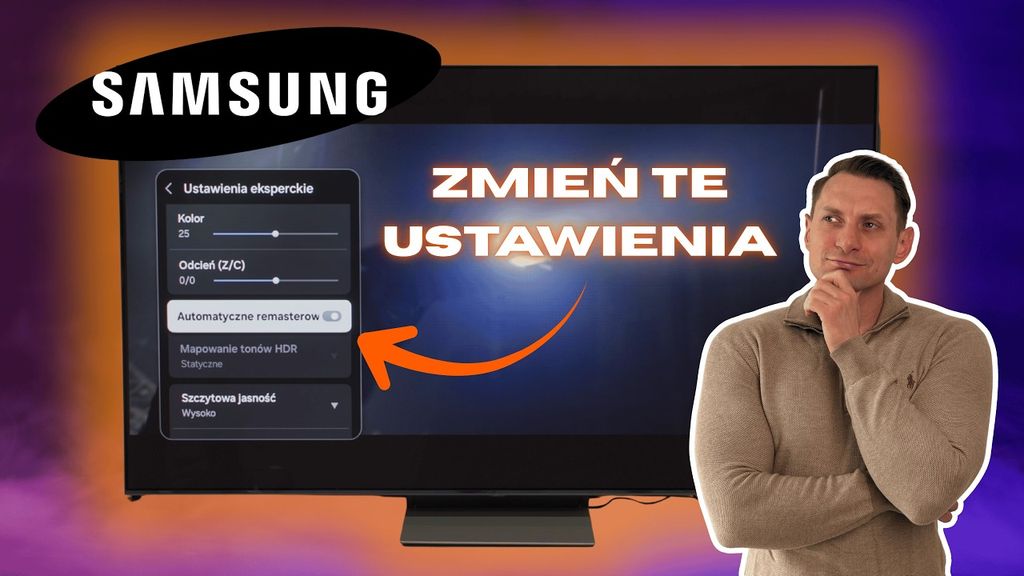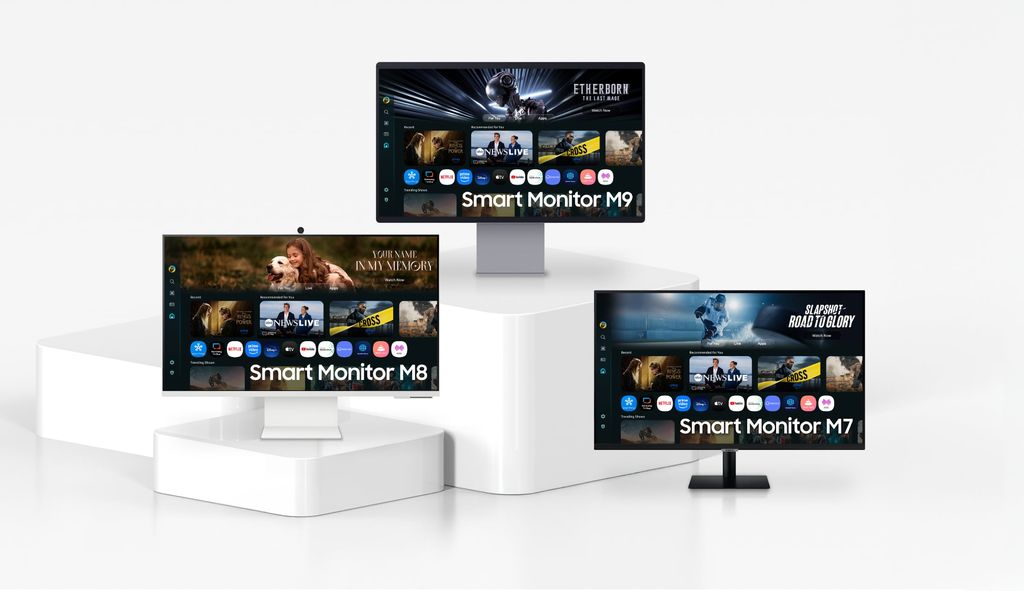- Matching (Score)
- Our verdict
- Competing TVs
- TV appearance
- Where to buy
- Contrast and black detail
- HDR effect quality
- Factory color reproduction
- Color reproduction after calibration
- Smoothness of tonal transitions
- Image scaling and smoothness of tonal transitions
- Blur and motion smoothness
- Console compatibility and gaming features
- Input lag
- Compatibility with PC
- Viewing angles
- Daytime performance
- TV features
- Apps
- Playing files from USB
- Sound
- Panel details
Samsung Neo QLED QN70F / QN74F / QN77F Review
QN70F / QN74F / QN77F
Available screen sizes:

Complete the survey to find out the result
Panel type: LCD VA Refresh rate: 144Hz Brand: SAMSUNG Resolution: 3840x2160 System: Tizen Model year: 2025
QN70F is the lowest model in this year's series of 4K Neo QLED televisions with Mini LED backlighting from Samsung. But does the term "Mini LED" actually reflect reality in this case? In this review, we will take a closer look at the QN77F model – a variant derived from the base QN70F. How does its picture quality hold up? Are we dealing with a true Mini LED, or rather a continuation of the QN70D, dressed in new marketing slogans? We examine this in the latest test.

SAMSUNG QN70F - Our verdict
7.1
Overall rating
Samsung QN70F is quite a decent television from the mid-range segment. Its strongest point is definitely the smoothness of the picture – thanks to the 144 Hz panel, low input lag, and a plethora of gaming features, we have here a recipe for an almost perfect gaming screen. It also performs well for sports fans – the picture is fast, clear, and there are no tears. In terms of picture quality – it’s really not bad at all. The VA panel provides good blacks, brightness is above average, and colours look great after calibration. Samsung advertises the QN70F as Neo QLED, meaning Mini LED, and in a sense, you can view it that way – but only partially. The backlighting is edge-lit, so it is far from being a full-fledged Mini LED with local dimming. It’s a shame, as marketing has its influence, and the user may feel somewhat misled. Additionally, there are minor shortcomings – no USB recording, no DTS support. But despite everything, the QN70F leaves a really good impression. It may not be a “true” Mini LED, but for its price, it is a solid piece of television – especially for gamers and those who enjoy fast, dynamic content.
Advantages
Nice black and contrast
Above average panel brightness
High refresh rate of 144Hz
Many features for gamers: ALLM, VRR, Game Bar etc.
Low input lag
4 HDMI 2.1 ports
Advanced and smooth Tizen operating system
Super slim design
Disadvantages
No USB recording feature
No DTS format
Issues with the HGIG function (for gamers)
Symbolic local dimming (Is this really MINI-LED?)
Movies and series in UHD quality
6.7
Classic TV, YouTube
6.6
Sports broadcasts (TV and apps)
6.7
Gaming on console
8.5
TV as a computer monitor
8.2
Watching in bright light
6.3
Utility functions
7.2
Apps
8.7
Sound quality
6.4
Complete the survey to find out what fits your preferences
SAMSUNG QN70F - Competing TVs in this price range
SAMSUNG QN70F - TV appearance
HDMI inputs: 0 x HDMI 2.0, 4 x HDMI 2.1 (48Gbps) Outputs: Toslink (Optical audio), eARC (HDMI), ARC (HDMI) Network Interfaces: Wi-Fi 2.4GHz, Wi-Fi 5GHz, Ethernet (LAN) 100Mbps
Build quality: Good
Stand type: Central
Bezel color: Graphite
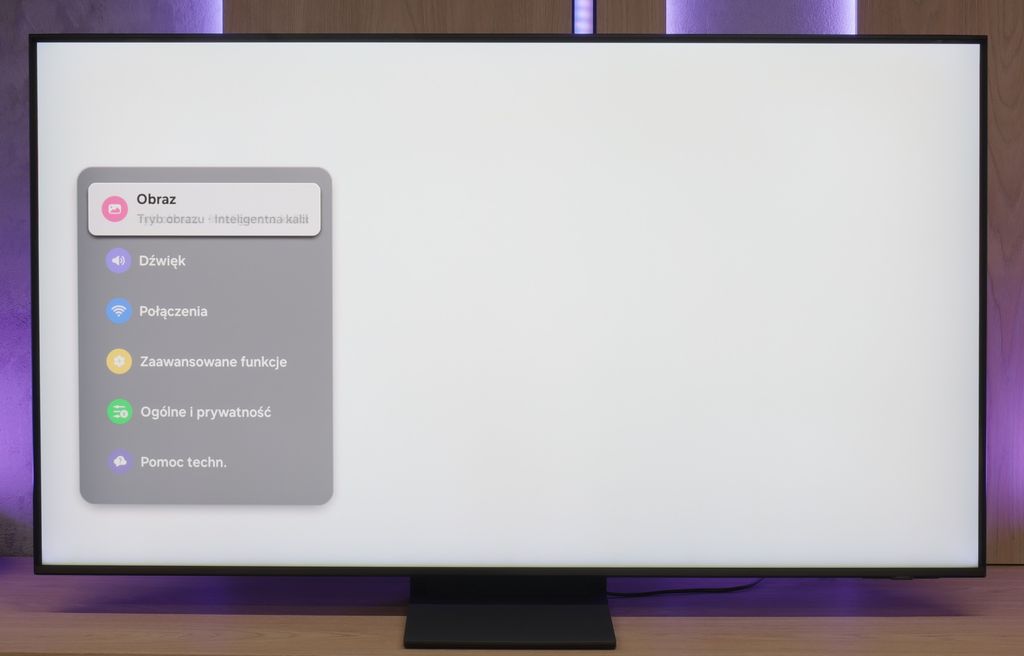
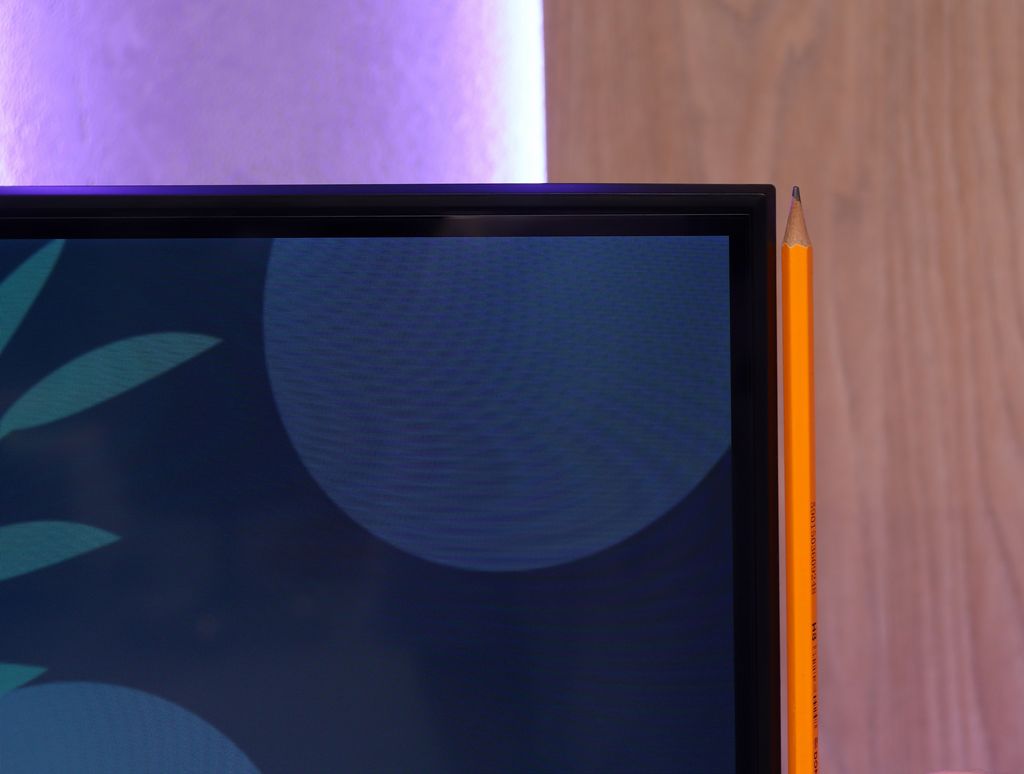
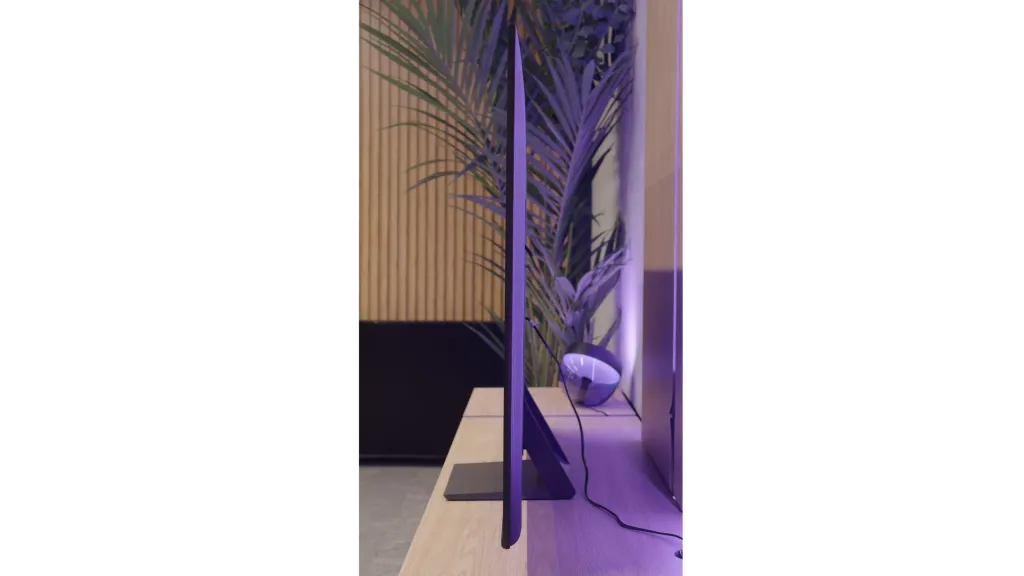
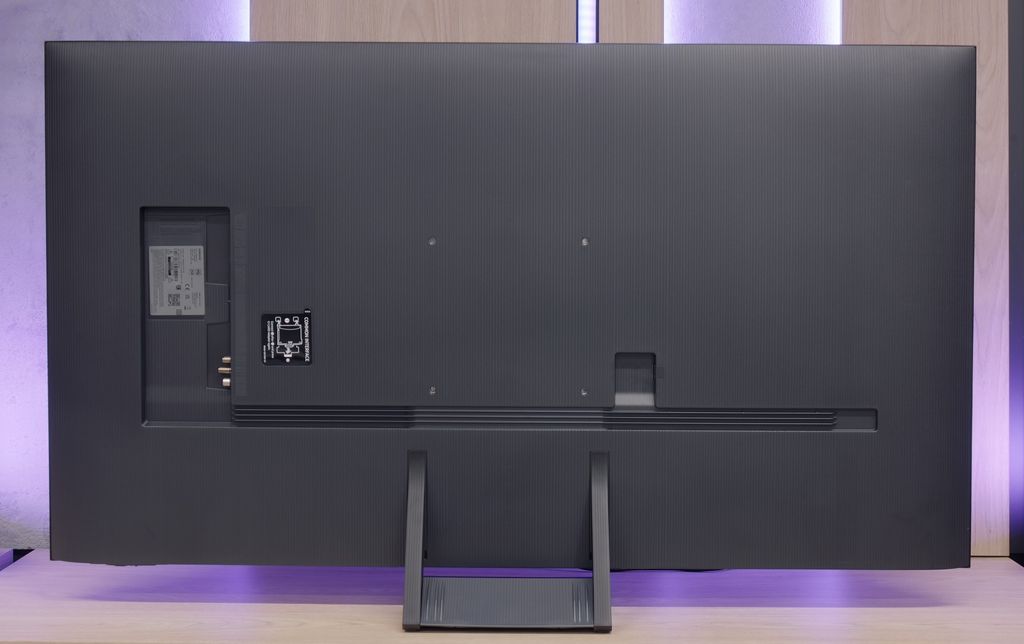
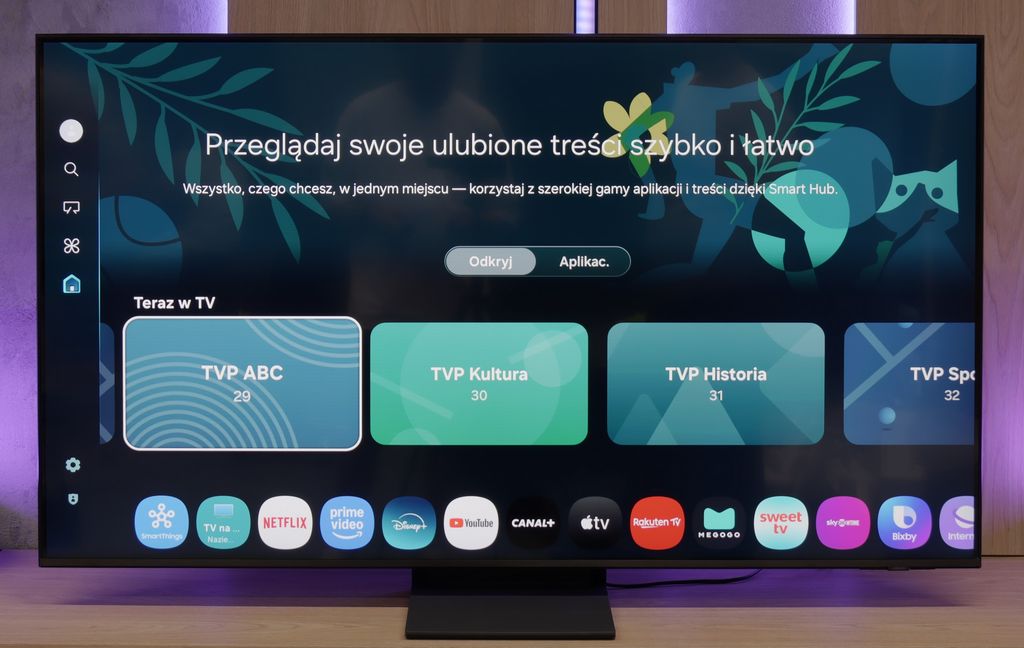
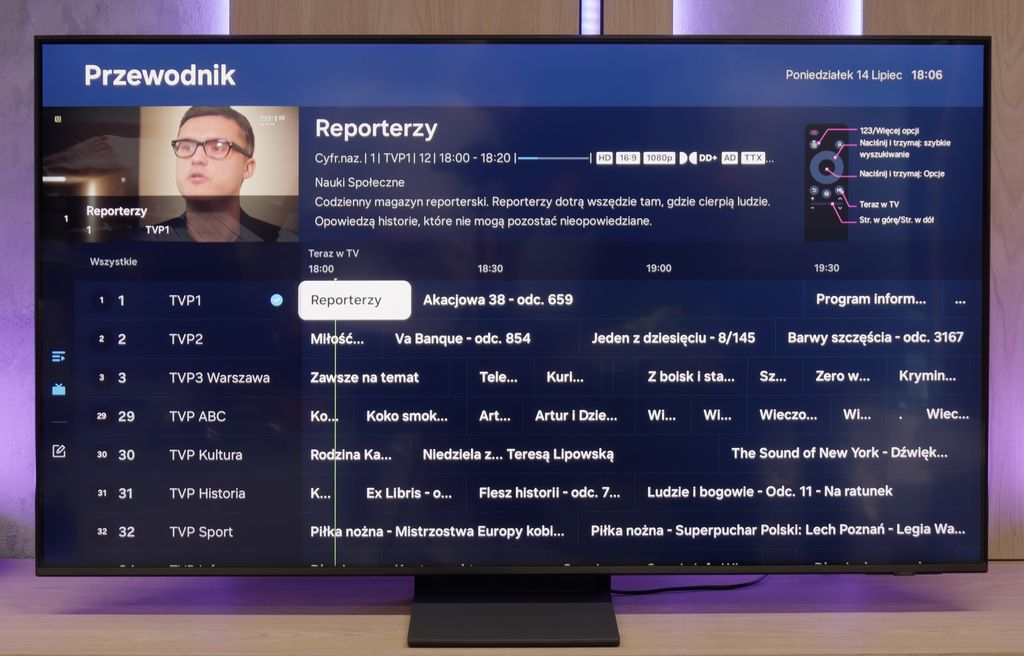
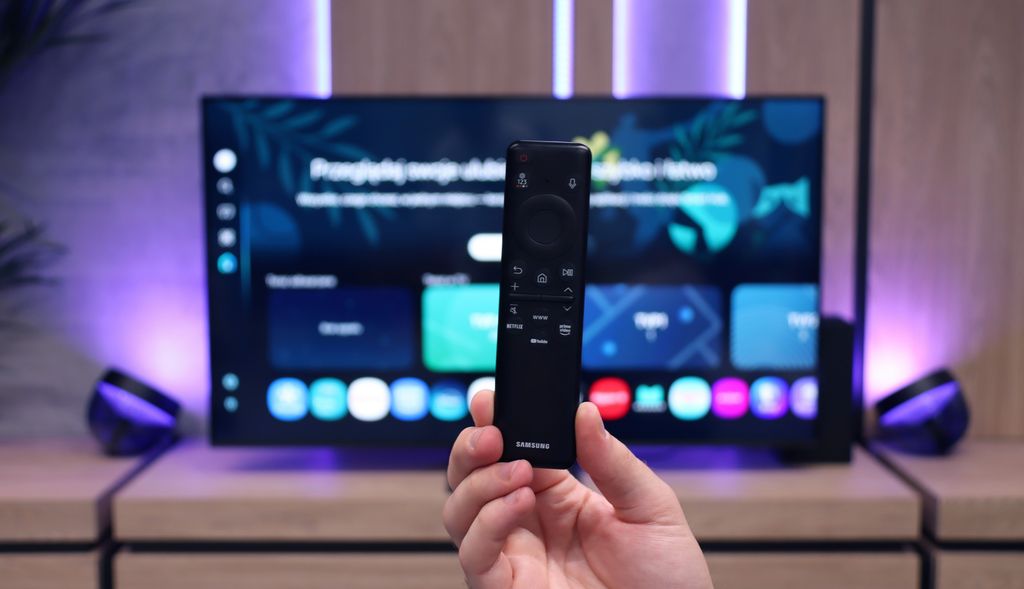
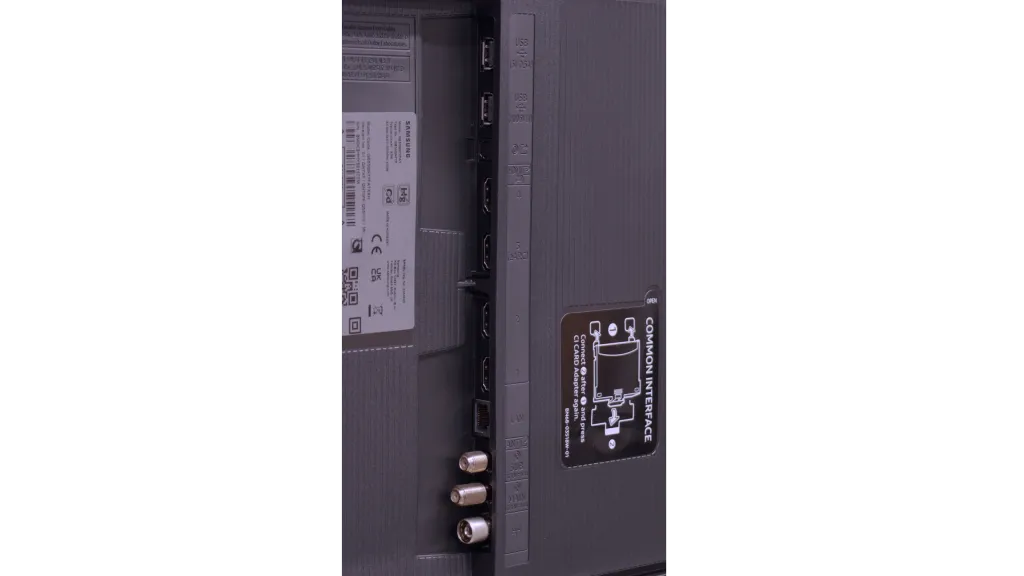
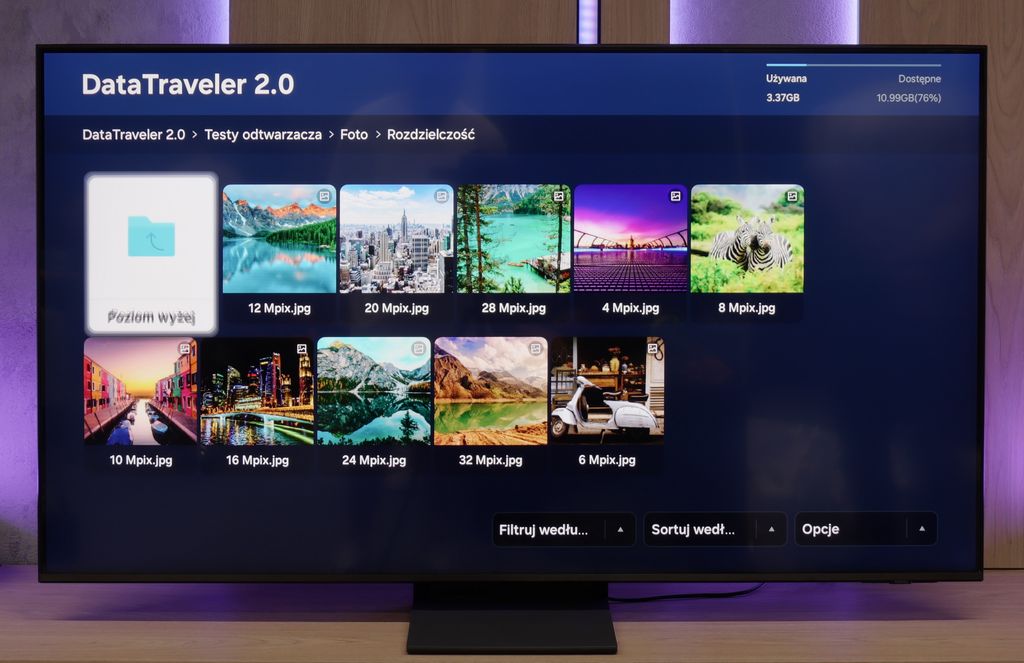
Stand: Fixed
Flat design: Yes
Accessories: Stand
The Samsung QN70F is a television that, at first glance, gives the impression of being a very sleek device. Its greatest advantage in terms of design is its slimness. When viewed from the side, it's hard to believe that we are talking about a classic television with a backlight – at its thinnest point, the casing is only around 2 centimetres thick. The whole thing resembles a modern display panel rather than a typical screen with speakers and electronics inside. It may not be of top-tier craftsmanship, as it is mainly made of plastic, but it must be acknowledged – it has been done well. The material looks aesthetically pleasing, nothing creaks, and the details are refined. The tested model QN77F features a dark graphite central stand that actually consists of two parts hidden under one cover. It looks minimalist and holds the structure well. The clever hiding of the cables is also noteworthy – despite such a slim profile, the manufacturer managed to conceal the 'cables' inside the casing, ensuring that the wires do not disrupt the clean line of the rear panel. If aesthetics are a priority, it can be confidently said: Samsung does this really well.
Buy at the best price
Select size:
SAMSUNG QN70F - Contrast and black detail
6.2/10
Local dimming function: Yes, number of zones: 20 (1 x 20)

Result
9,200:1

Result
7,000:1

Result
5,350:1

Result
5,700:1

Result
5,300:1
Visibility of details in the lights:

The QN70F is equipped with a VA panel that offers a high native contrast – this is already a good starting point for black levels, especially during evening viewing. However, its capabilities do not theoretically end there. The television is branded as Neo QLED, which indicates the presence of Mini LED technology and a local dimming system. And indeed – the QN70F has this function. The problem is that we are not talking about classic local dimming with LEDs positioned directly behind the panel. Instead, edge lighting has been implemented with an overall dimming mechanism known as global dimming. The effect of this is that instead of selective brightness control in individual zones, the entire screen is slightly dimmed when a dark scene appears. In practice, this means that the contrast is average compared to Mini LED models that offer true local dimming. The black levels are not bad – thanks to the VA panel itself – but one cannot speak of precise light control like that provided by advanced systems with multiple zones. This raises the question: is the QN70F series really a Mini LED television, or just a marketing variation on the Q70 series? Looking at the technical aspects – it is hard to consider this model a full-fledged representative of this technology. But in everyday use, the black levels appear decent and for many people may be fully satisfactory.
Halo effect and black detail visibility:
SAMSUNG QN70F - HDR effect quality
5.6/10
Supported formats: HDR10, HDR10+, HLG Color gamut coverage: DCI P3: 93.7%, Bt.2020: 75.7%
Luminance measurements in HDR:

Result
619 nit

Result
449 nit

Result
500 nit

Result
422 nit

Result
483 nit
The QN70F is a television that can pleasantly surprise when it comes to brightness. In ideal testing conditions, it reaches up to 800 nits, which – for this price range – is a really solid figure. Of course, this result comes from measurement charts, so we decided to check how it performs in practice, with real films. Here, the television somewhat tempers its capabilities. In most tested scenes – for example, in "The Meg" – the actual HDR brightness hovered around 500 nits. This is still a decent result, allowing for enjoyment of HDR effects, although it is far from perfect. On the other hand, we have a QLED screen with a layer of quantum dots, which means very good colour reproduction capabilities. The colours are vibrant and saturated. The QN70F covers about 94% of the DCI-P3 colour space, and in the wider BT.2020 palette, it exceeds 75%, so in this respect, there is nothing to be ashamed of.
Scene from the movie “Pan” (about 2800 nits)

Scene from the movie “Billy Lynn” (about 1100 nits)

We also tested the QN70F for difficult materials – namely films in the highest quality HDR available on streaming platforms. Initially, we were sceptical, but we must admit that the television pleasantly surprised us. Tonally, it performs well – colours transition smoothly, and the overall image balance is correct. Only the brightest elements, such as light reflections or explosions, have less detail than in higher-end models. It’s not on the level of televisions with brightness of 1000 nits, but for this class of equipment – it looks really decent. In a scene from the film, the reproduction of details in the darker areas was very good, and the whole maintained tonal consistency. The HDR effect may not make a big impression, but it also does not disappoint – it's simply a solid level for the capabilities of the QN70F. The television offers a dynamic tone mapping function and – as is usually the case with Samsung televisions – the "static" mode performed better. The image was more balanced and natural. With active mapping, there were instances where brightness was boosted too much, causing some scenes to look unnatural. Therefore, in our tests, we recommend sticking with the "static" setting.
HDR luminance chart:
HDR luminance
Samsung QN70F supports several popular HDR formats, but the most commonly used remain the standard HDR10 and its extension – dynamic HDR10+. And although the latter is still not as widespread as Dolby Vision, it has been appearing more frequently in recent months, even on streaming platforms where the competing format has previously dominated. Does this matter? Absolutely – and it's immediately evident when we compare the same material. Content using dynamic metadata in HDR10+ looks significantly better on the QN70F. The picture has more detail, colours are better matched to the brightness of the screen, and the HDR effect seems more refined. In one of the test scenes – the difference was striking. The version with HDR10+ looked as if we were watching the same film on a completely different television. This is precisely why information about the support of HDR10+ by additional services – including recently Netflix – is so important. The QN70F may not support Dolby Vision, but when we come across material prepared for the "Samsung" format, it can certainly showcase its strengths.
Static HDR10

Dynamic: HDR10+

Factory color reproduction
7/10
We tested the QN70F in its best default picture mode, which is Filmmaker Mode. I must admit that in this particular test unit, the factory settings performed quite well. The image was calm, natural, and despite minor deviations – pleasant to watch. The biggest flaw was a slight dominance of red in the white balance, which caused a slight pinkish hue across the entire scene. However, this was not a glaring defect – rather subtle and only noticeable when directly compared to a properly calibrated screen. A somewhat larger issue arose in the brightness characteristic. The television tends to underestimate the brightness of parts of the image that should be displayed more brightly. As a result, some details can appear slightly muted – not so much lost completely, but not resonating as clearly as they should. Nonetheless, as far as televisions in this category and in these settings are concerned – we consider the result a good starting point for further calibration.
Color reproduction after calibration
8.5/10
After calibration, the QN70F shows that it can offer a truly high level of colour reproduction. The white balance was nearly perfectly aligned, and the values in the Color Checker test dropped below level 3 – meaning below the threshold at which the average eye can perceive differences. The image looks natural, and the colours are faithfully rendered, without excessive saturation or the coolness known from factory settings. It must be admitted that Samsung provides very extensive calibration options – not only for enthusiasts but also for professionals. The QN70F takes advantage of this potential and, after proper adjustment, can come close to significantly more expensive models in terms of colour accuracy. The only thing that can still be nitpicked is the brightness characteristic. There is still a tendency to lighten the smallest areas of the image – particularly those that should remain darker. However, this is a design feature of this model, not a calibration error. Despite this, the final effect definitely deserves recognition.


SAMSUNG QN70F - Smoothness of tonal transitions
9/10
In terms of the fluidity of tonal transitions, the QN70F performs really well. Gradients are smooth, and colours blend into each other without obvious thresholds or banding. Even in more difficult movie scenes – particularly those that are very dark – any possible imperfections are minimal and you really have to make an effort to notice them. In regular viewing, most users should not encounter any issues with colour merging. The image looks clean and coherent, without artificial smoothing or distortions. This is another aspect in which the QN70F pleasantly surprises.
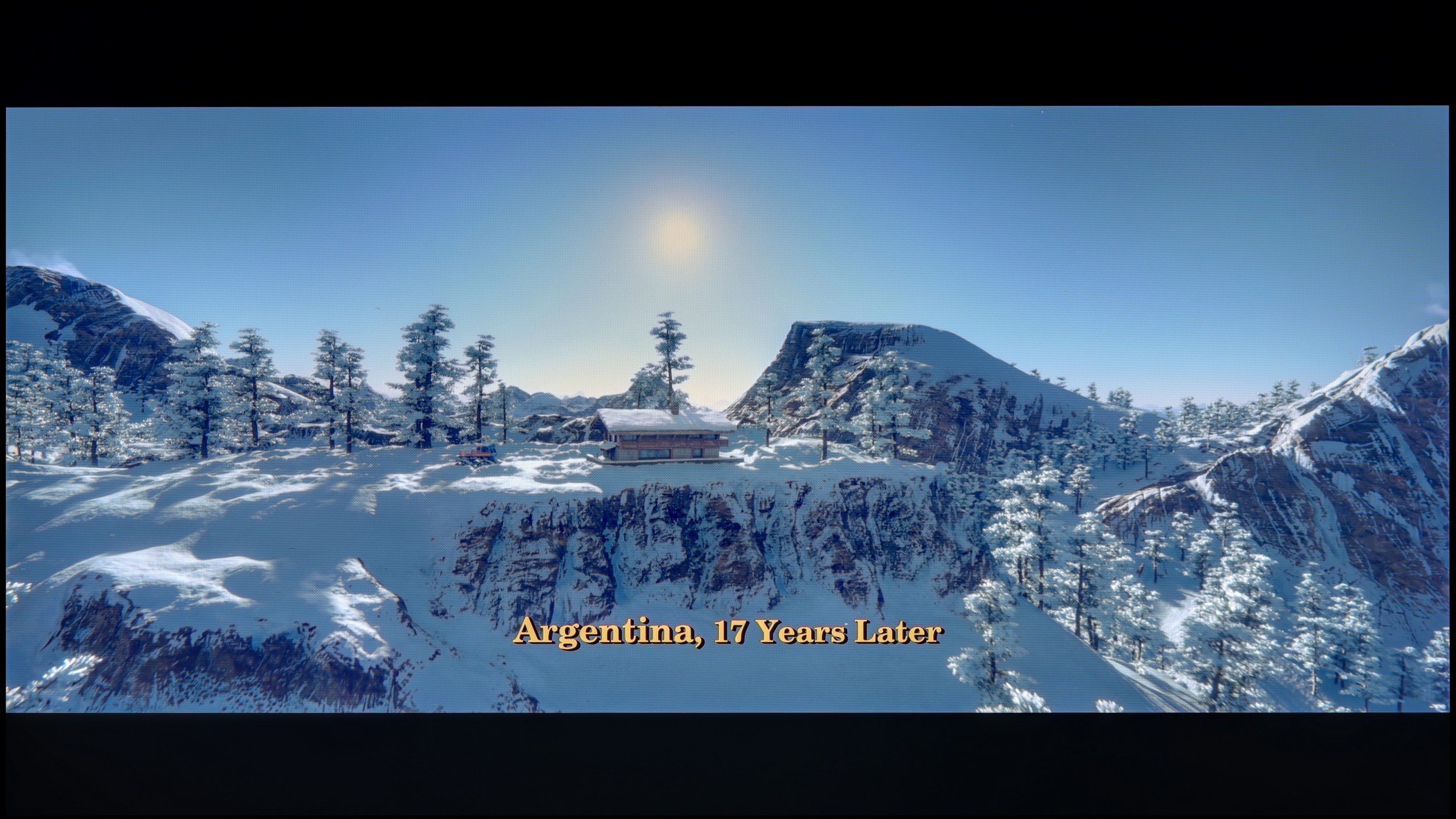







Image scaling and smoothness of tonal transitions
6.9/10
Smooth transition function
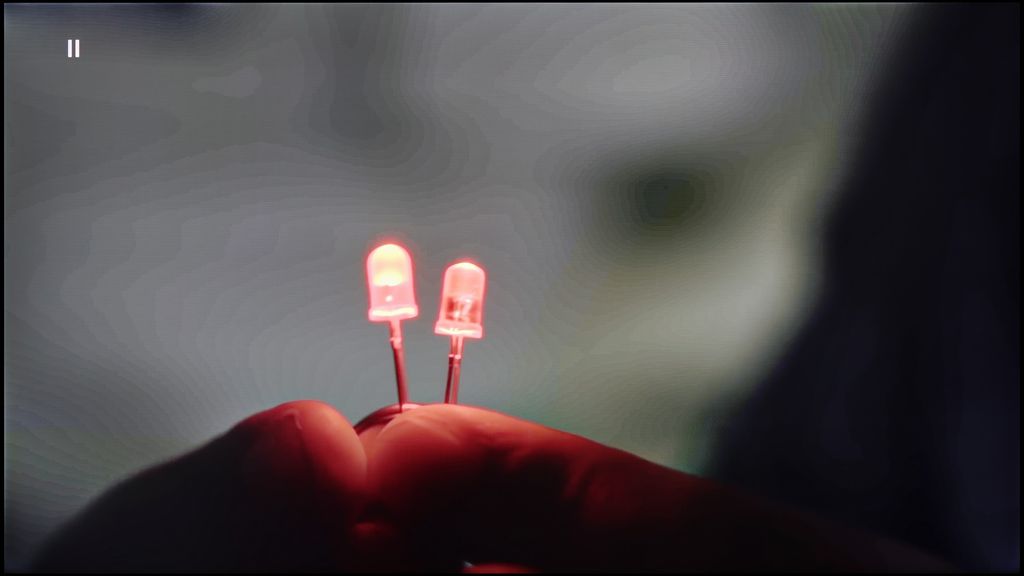
Image without overscan on the SD signal

Samsung QN70F offers a distortion reduction feature that enhances the smoothness of tonal transitions. In "Standard" mode, it works quite well – it smooths out problematic transitions without significantly interfering with the structure of the image. Film grain is somewhat reduced, but details such as texture and skin structure remain visible. The "High" mode is much more aggressive. The smoothing is stronger, but it comes at the cost of a noticeable loss of detail. Therefore, in practice, we recommend sticking with the "Standard" setting or completely turning this function off. The improvement in gradation may be less spectacular, but the image retains more naturalness.
When it comes to scaling low-quality content, the QN70F performs very well. Tests with lower resolution images were really very good. Despite slight edge ringing, everything looks clean and clear, even if the original content was very poor. It’s just a pity that the television has an issue with overscan, which cannot be completely turned off. As a result, images with very low resolution may be slightly cropped, which is mainly noticeable on subtitles or interfaces.
SAMSUNG QN70F - Blur and motion smoothness
7.5/10
Maximum refresh rate of the panel: 144Hz
Film motion smoothing option: Yes
Blur reduction option: Yes
BFI function 60Hz: Yes, 60Hz (image flickers)
BFI function 120Hz: No
Brightness drop with BFI: 63%
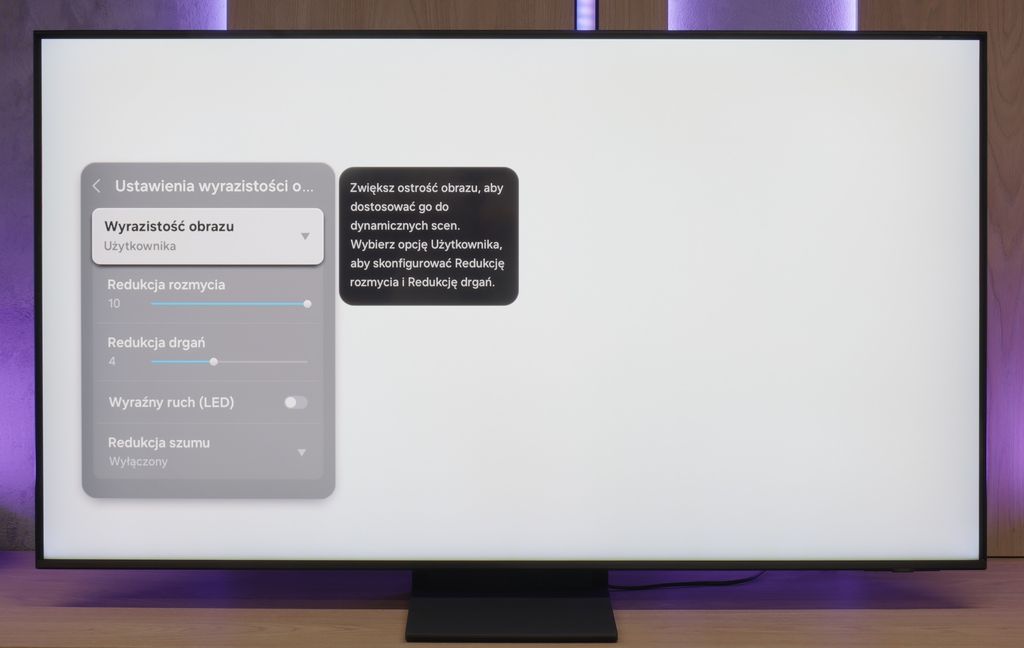
The QN70F is a television with a refresh rate of 144 Hz, which in itself places it among the top when it comes to image fluidity. Whether we are watching dynamic sports broadcasts or playing on a console – the picture looks very good. There is no sense of stuttering, choppiness, or the typical "tearing" associated with weaker models during fast motion. Samsung also allows you to adjust the fluidity to your own preferences. In the picture clarity settings, we find options such as blur reduction and judder reduction – each of which we can adjust independently. This is especially useful when watching content with a lower frame rate and wanting to give it a smoother, more theatrical character – or conversely, to maintain the natural cinematic "feel" of 24 frames.
Blur (native resolution, maximum refresh rate):

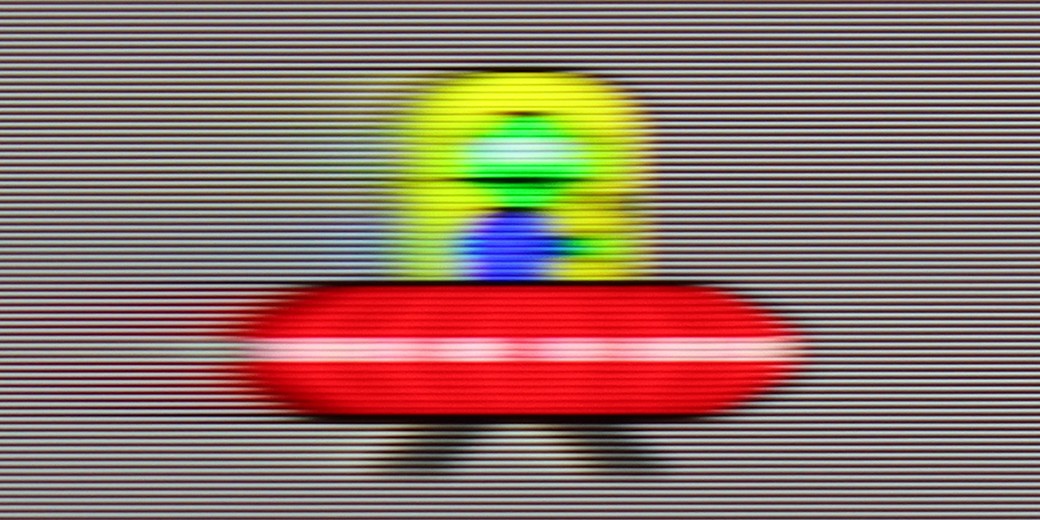
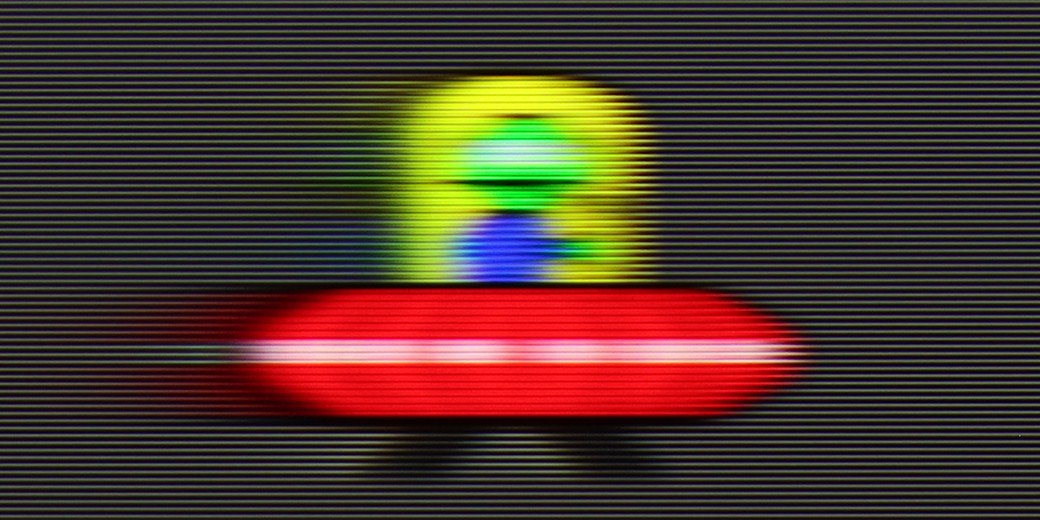
Blur (BFI function enabled):
Image flickers in this mode



Blur (4K 144Hz):


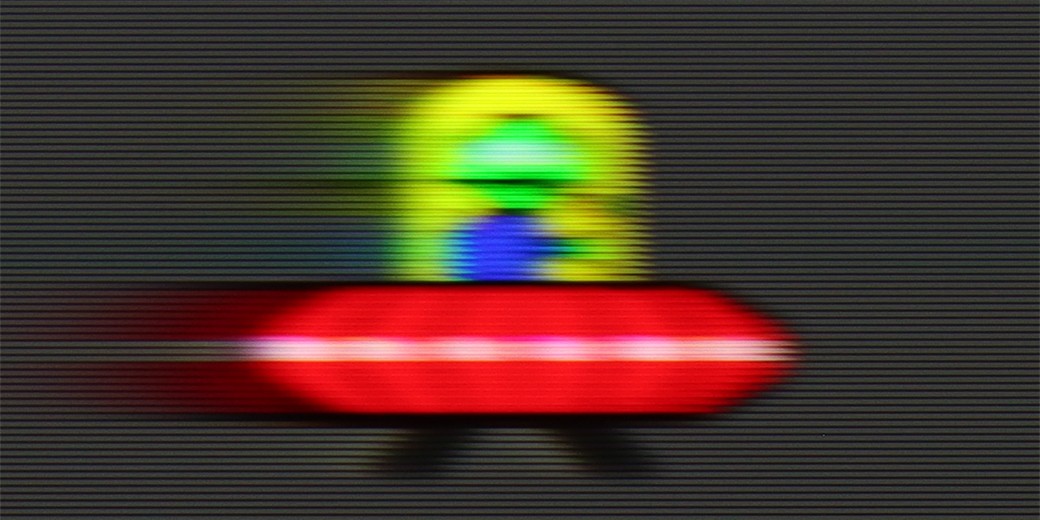
Motion blur on the QN70F remains at a very acceptable level. During tests with the UFO animation, slight trails were visible, particularly on darker backgrounds, but this did not negatively affect the overall perception – the image remains clear and sharp even in fast sequences. The television is equipped with the "Clear Motion LED" feature, a classic BFI system. Its operation significantly improves motion sharpness – motion blur practically disappears. Unfortunately, as with most models with this technique, a side effect is the noticeable flickering of the image, which can be tiring on the eyes. For this reason, we do not recommend using this option on a daily basis.
SAMSUNG QN70F - Console compatibility and gaming features
8.2/10
ALLM: Yes
VRR: Yes
VRR range: 48 - 144Hz
Dolby Vision Game Mode: No
Correct implementation of HGIG: No
1080p@120Hz: Yes
1440p@120Hz: Yes
4K@120Hz: Yes
Game bar: Yes
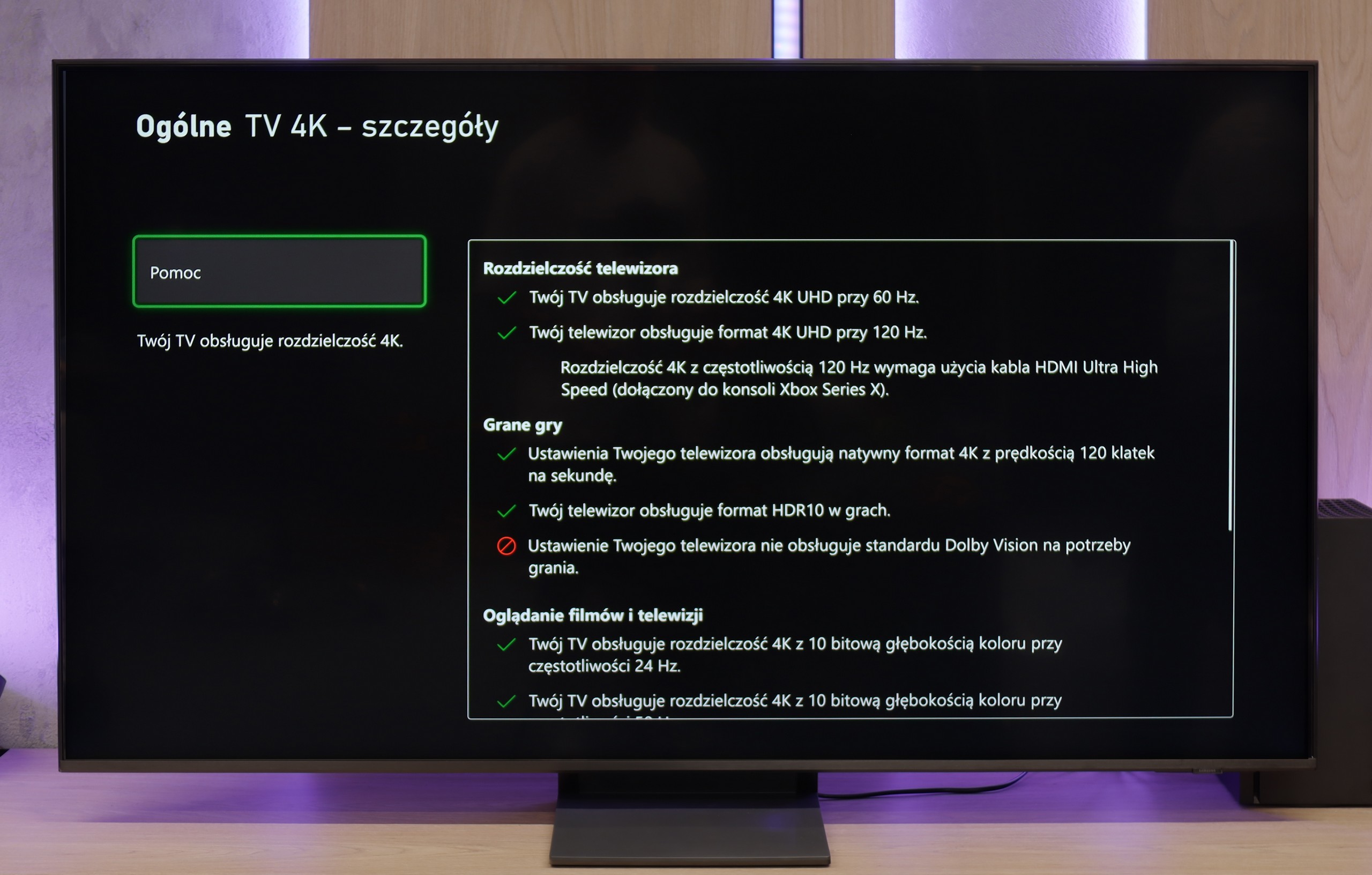
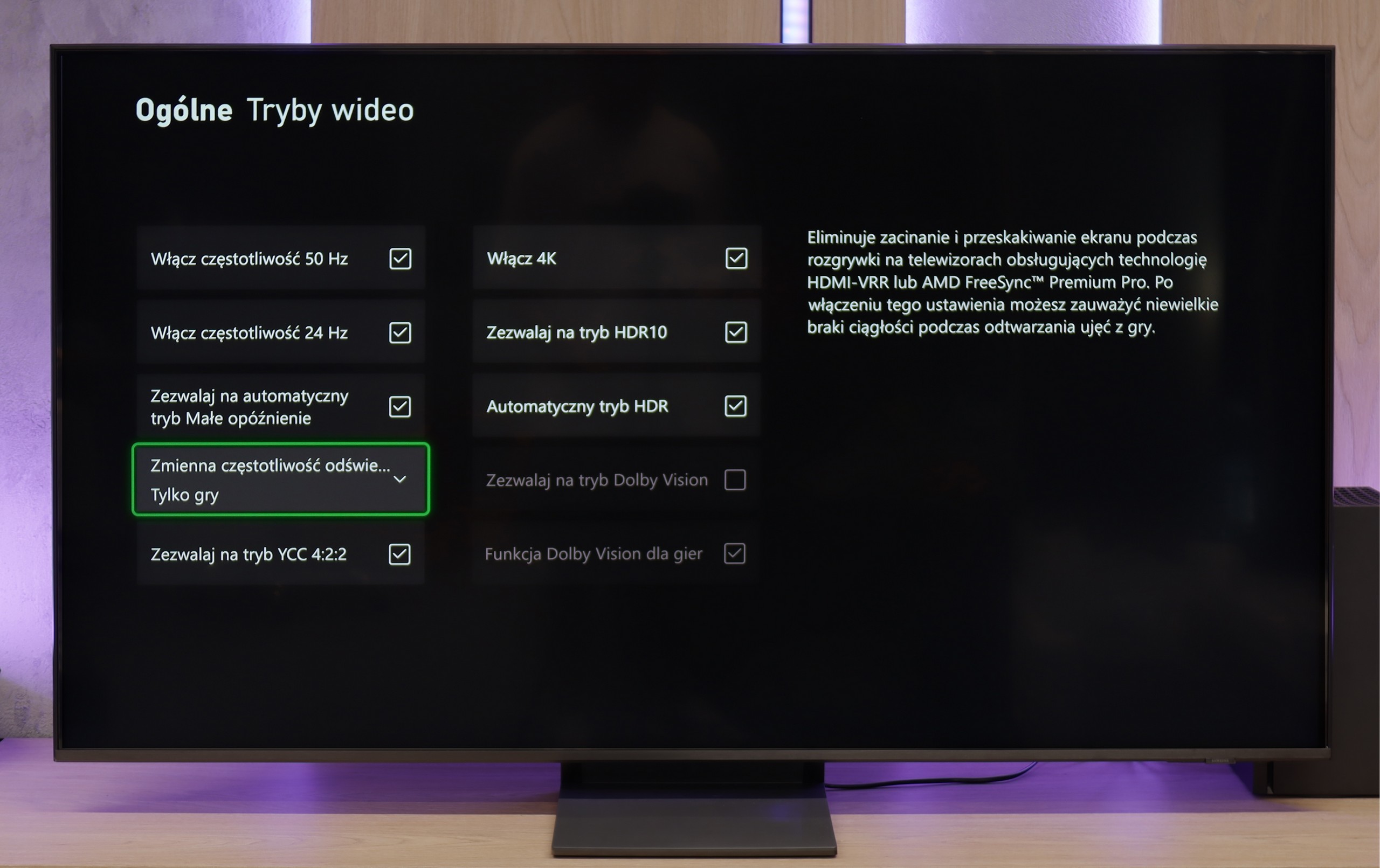
The Samsung QN70F is truly a solid choice for gamers. Here, we find as many as four HDMI 2.1 ports with full bandwidth of 48 Gbps, meaning full support for gaming in 4K at a refresh rate of 144 Hz. Additionally, it includes all the essential features we expect today: automatic game mode (ALLM), variable refresh rate (VRR), and a very well-designed, intuitive Game Bar showing information about mode, resolution, and frame rate.
Also noteworthy is the Game Motion Plus feature, which allows artificial frames to be added to games running at 60 fps or less. This works surprisingly well and in many titles – particularly those where consoles struggle to maintain a stable framerate – it improves the fluidity of gameplay without significant delay.
Unfortunately, there are some drawbacks. The lack of support for Dolby Vision mode is not surprising – it’s a standard with Samsung. However, the absence of the HGiG feature is much more disappointing. Worse still, it was removed with a software update, which may leave users who previously relied on it quite puzzled. Without HGiG, it is impossible to manually set the maximum HDR brightness from the console, resulting in some games appearing slightly washed out – especially if the television misinterprets the tonal range. Why Samsung, a brand that has set standards for gaming features for years, decided to take such a step is hard to say. At the time of writing this review, the tested television was running on software version 1110 – and frankly, if you care about full support for gamers, it’s better to hold off on updates for the time being.
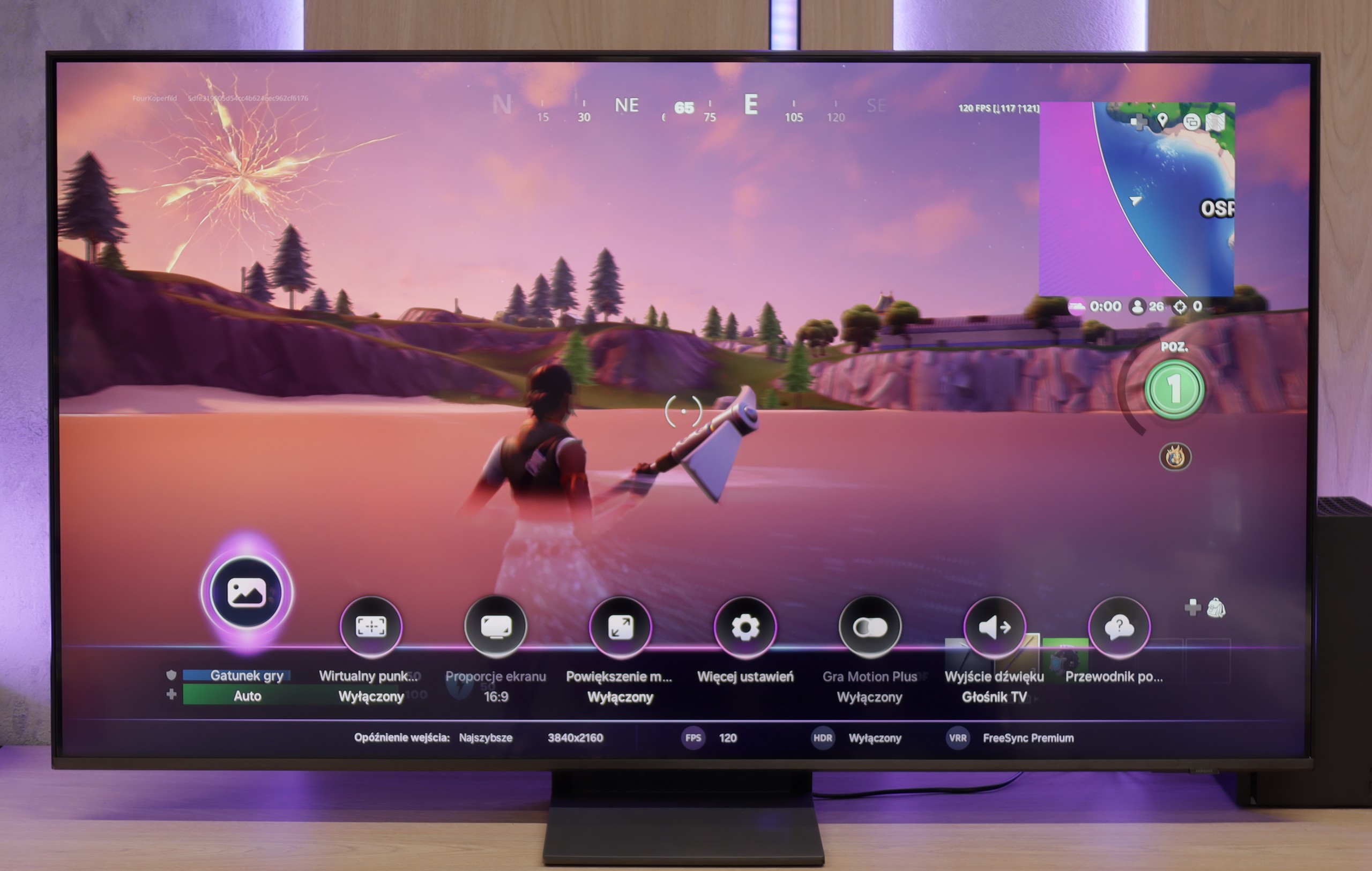
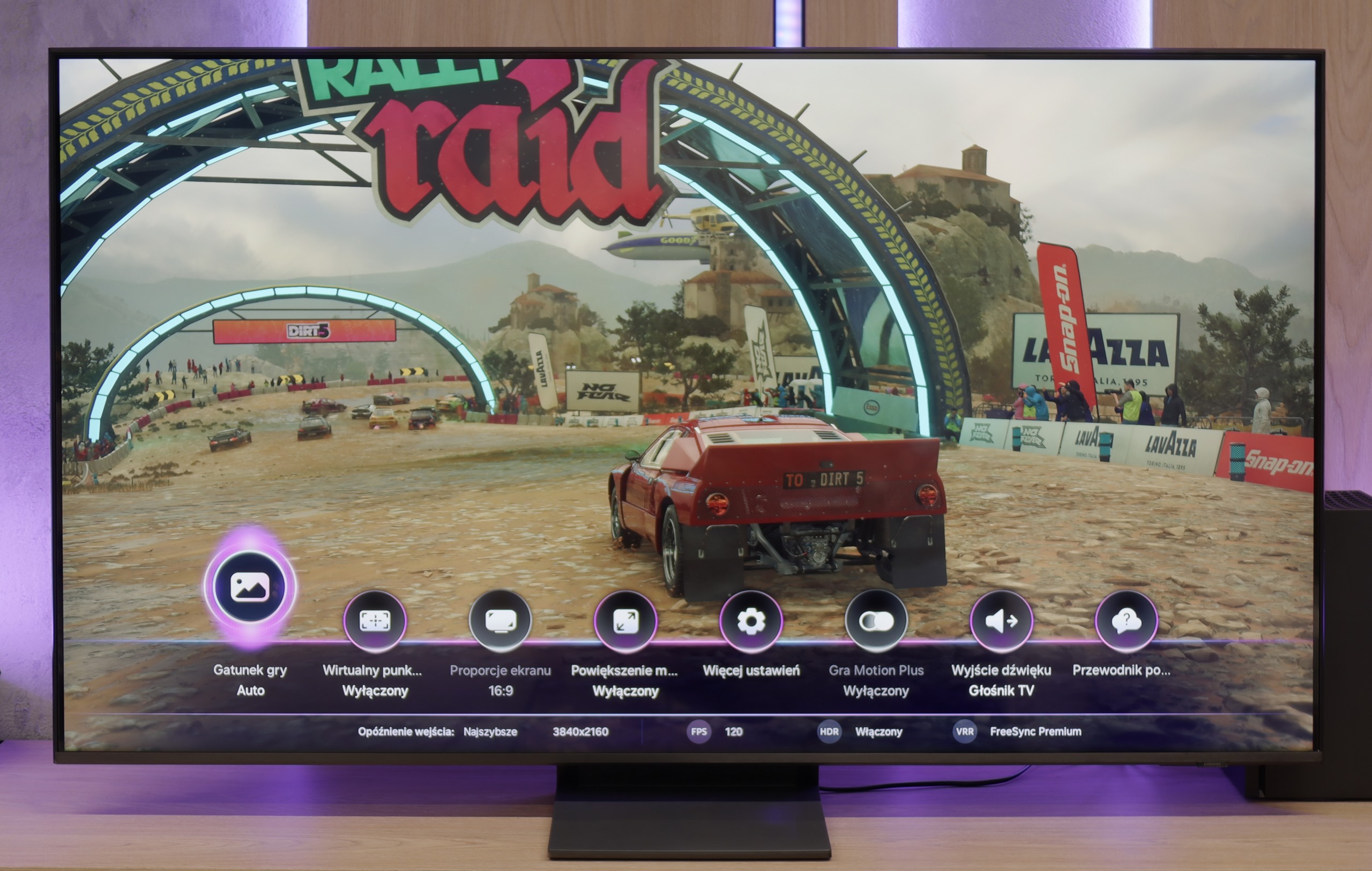

SAMSUNG QN70F - Input lag
10/10
QN70F does not disappoint in terms of response time either. For 120 Hz materials, the input lag hovers around 8 ms, which can be considered a very good result – especially in the context of online competition or dynamic action games. The screen responds to the movements of the controller almost instantaneously, with no noticeable delay. As a result, the gameplay is smooth and comfortable, even in more demanding titles. In this category, Samsung still maintains a high standard, and it is hard to find anything that could raise objections.
| SDR | HDR | Dolby Vision |
|---|---|---|
| 1080p60: 14 ms | 2160p60: 13 ms | |
| 1080p120: 8 ms | 2160p120: 7 ms | |
| 2160p60: 14 ms | ||
| 2160p120: 7 ms |

SAMSUNG QN70F - Compatibility with PC
8.2/10
Chroma 444 (maximum resolution and refresh rate): Yes
Font clarity: Good
Readability of dark text and shapes: Poor
Input lag in PC mode (4K, maximum refresh rate): 9ms
Matrix subpixel arrangement: BGR
Max refresh rate: 144Hz
G-Sync: Yes
Let's start with the best aspect of connecting the QN70F to a computer – gaming. A refresh rate of 144 Hz, support for G-Sync compatible VRR, and very low input lag create the perfect recipe for an almost ideal screen for PC gamers. In this role, the QN70F truly does not disappoint – games look smooth, responsiveness is at a very high level, and everything runs stably.
However, the performance regarding text work is somewhat lacking. At a resolution of 4K and a refresh rate of 144 Hz, there is a noticeable blurriness in the font contours – text may appear slightly smeared, with a slight “layering” of the contours. This is not a problem that undermines the usability of the QN70F as a monitor, but individuals planning to do office work or text editing on this screen should keep this in mind.
SAMSUNG QN70F - Viewing angles
3.1/10
Brightness drop at an angle of 45 degrees: 74%
As for the VA panel, the viewing angles on the QN70F are typical – meaning rather average. The image quickly loses contrast and saturation when we start looking at the screen from a greater angle. Compared to IPS panels, it performs significantly worse. On the other hand – thanks to this panel, we gain better blacks and higher contrast when viewing straight on, which will be more important for many users than wide visibility from the sides.
SAMSUNG QN70F - Daytime performance
6.3/10
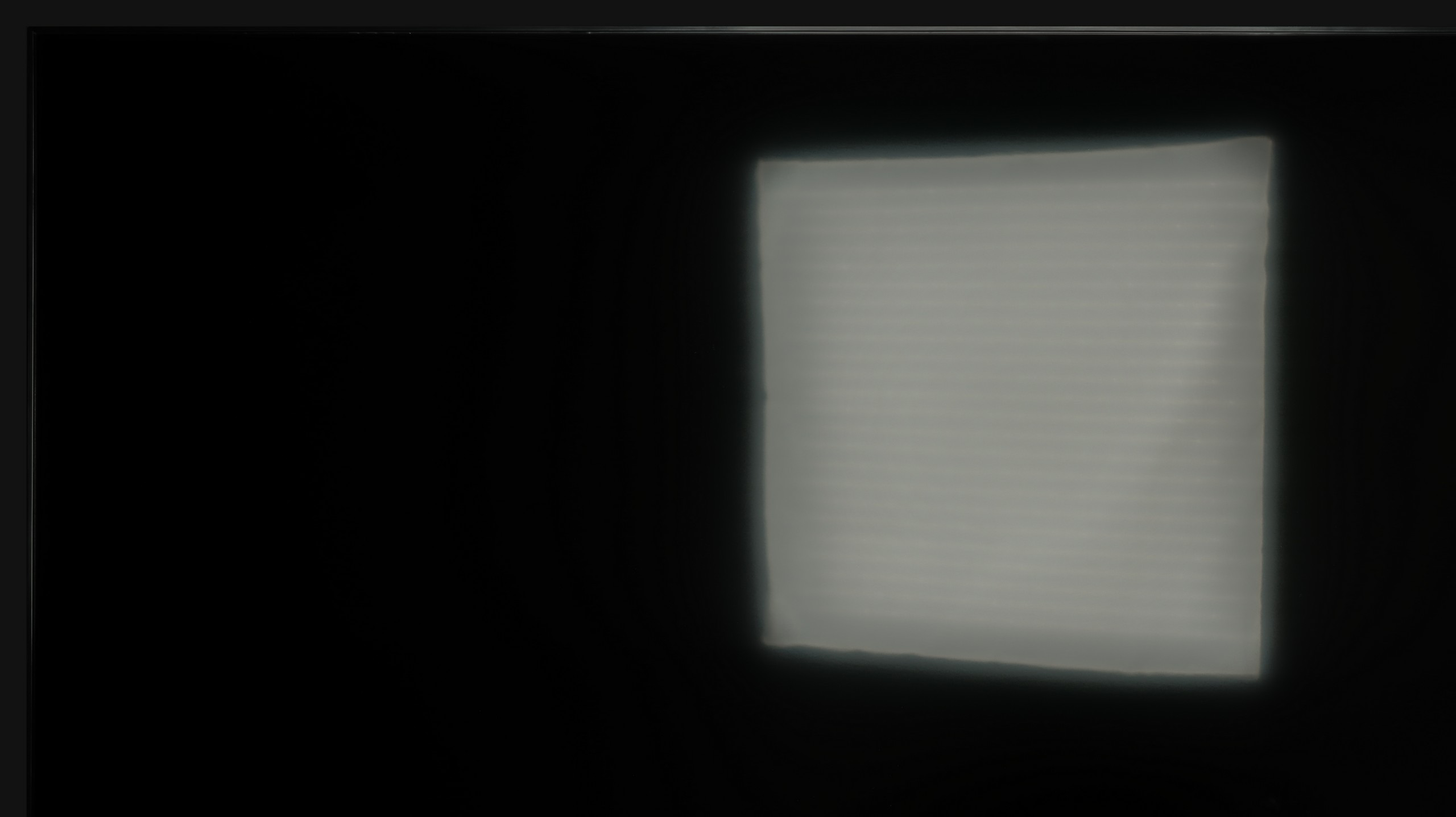

Panel finish: Satin
Reflection suppression: Good
Black levels during daytime: Very Good
The QN70F handles a bright living room without any issues. The screen has a satin finish that effectively suppresses reflections, so there's no need to immediately draw the curtains to see anything. Even when there's plenty of light in the room – for example, with a window to the side – the picture still looks clear and vibrant. The brightness is also at a solid level. In SDR mode, the television averages around 500 nits, which is more than sufficient for daytime viewing. While it may not reach the levels of top models, in practice – for everyday television watching, sports, or YouTube – it performs very well.
Panel brightness
Average luminance SDR
Samsung Neo QLED QN70F / QN74F / QN77F: 492 cd/m2
SAMSUNG QN70F - TV features
7.2/10
System: Tizen
System performance: Good
- HDMI inputs: 0 x HDMI 2.0, 4 x HDMI 2.1 48Gbps
- Outputs: Toslink (Optical audio), eARC (HDMI), ARC (HDMI)
- Network Interfaces: Wi-Fi 2.4GHz, Wi-Fi 5GHz, Ethernet (LAN) 100Mbps
- TV reception: DVB-T, DVB-T2, DVB-S, DVB-S2, DVB-C
Classic features:
Recording to USB (terrestrial TV): No
Recording programming: No
Picture in Picture (PiP): Yes
RF remote control (no need to aim at the screen): RF
Backlit remote control: No
Teletext: Yes
Audio only mode: Yes
Bluetooth headphones support: Yes
Simultaneous Bluetooth headphones & TV audio: Yes
Smart features:
AirPlay: Yes
Screen mirroring (Windows Miracast): Yes
Voice search: Yes
Voice search in native language: Yes
Ability to connect a keyboard and mouse: Yes








Television Features
The QN70F doesn't forget classic features that still matter to many users. On board, we find, among other things, picture-in-picture (PiP) mode, enabled by the presence of two tuners, teletext, and a "Sound Only" mode – perfect if we want to use the television like a radio. We can easily pair it with headphones or a soundbar via Bluetooth, and the remote control – despite the absence of a numeric keypad – works reliably, allowing us to operate other devices and additionally does not require us to aim at the screen. However, it should be noted that like all new Samsung models, we will not find USB recording functionality here. This is a system limitation that the brand clearly adheres to consistently.
Smart TV QN70F – Tizen
The Tizen system, developed by Samsung for years, is one of the most refined Smart TV interfaces. It is fast, intuitive, and feature-rich. The QN70F supports voice search (also in Polish), wireless screen mirroring from a phone (both via AirPlay and Miracast), as well as integration with watches and other devices in the Samsung ecosystem. All of this is connected by the SmartThings app, which allows you to control hardware, automate tasks, and connect devices in one network. (Not only Samsung brand devices). However, it is not perfect. Tizen is a closed system, so the selection of apps can be somewhat limited – especially in comparison to Google TV. All the major streaming services are in place, but if you use less popular services, it's worth checking before purchasing if they are available in the Samsung store.
Sound connection options
HDMI audio:
Other audio outputs:
Toslink: Yes
Wireless audio:
Bluetooth: Yes
Supported audio formats (external HDMI eARC audio):
Dolby Digital Plus 7.1: Yes
Dolby True HD 7.1: No
Dolby Atmos in Dolby Digital Plus (JOC): Yes
Dolby Atmos in Dolby True HD: No
DTS:X in DTS-HD MA: No
DTS-HD Master Audio: No
Senior accessibility
Numeric keyboard on TV: No
Font size adjustment: Yes
Audio description: Yes
SAMSUNG QN70F - Apps
8.7/10























SAMSUNG QN70F - Playing files from USB
9/10

| Maximum photo resolution: | Supported photo formats: |
|---|---|
Samsung QN70F performs well with media playback – it easily runs photos, music, and videos in the most commonly used formats. During tests, it effortlessly opened JPG files, MP4, and subtitles in TXT format, so for most people, this will simply be sufficient. However, there were instances where a few files – despite having the correct extensions – would not play. It may be an issue with a specific version of the system, and the problem might disappear after future updates.
SAMSUNG QN70F - Sound
6.4/10
84dB
Maximum volume
Supported codecs
(TV speakers)
Dolby Digital Plus 7.1
Dolby True HD 7.1
Dolby Atmos in Dolby Digital Plus (JOC)
Dolby Atmos in Dolby True HD
DTS:X in DTS-HD MA
DTS-HD Master Audio
The Samsung QN70F performs quite mediocrely in terms of sound, which shouldn't come as a surprise considering the exceptionally slim design of the television. The built-in speakers will manage perfectly well during everyday viewing of news or simpler content, but it's hard to talk about any depth or spaciousness of sound here. It's simply a compromise one has to accept when choosing an elegant and thin design over a bulkier casing with a better audio system.
Sound Quality Test:
Acoustic Measurements
84dBC (Max)
75dBC
SAMSUNG QN70F - Panel details
Software version during testing: 1110
Subpixel Structure:

Panel uniformity and thermal imaging:
Backlight Type: QLED

Founder and originator of the "ChooseTV" portal

Journalist, reviewer, and columnist for the "ChooseTV" portal
See articles related to Samsung Neo QLED QN70F / QN74F / QN77F:
4/3/2025
Our YouTube channel
Settings for Samsung QLED and OLED TV [Movies, Sport, TV, Ga... 10/16/2025






